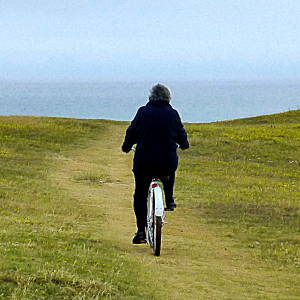Elizabeth House, Midhurst
This is just one of the small buildings in Midhurst Old Town with a big story to tell. Its origins are thought to be around 1460. It has been an inn, a cycle repair shop, The National Provincial Bank, The Tudor Rose tea and coffee tavern and Maxine’s Restaurant. It is called Elizabeth House, though it has an alternative name, the intriguing ‘House of Ten Thousand Sixpences’. It stands on the very narrow Red Lion Street which widens to become Church Street.
I’ve mentioned before the old system of burgage tenures in Midhurst and surrounding towns, where the owner of house or land was entitled to a vote at elections. Such properties were in demand by wealthy landowners who would then rent them out with the stipulation that, at the cost of 6 pence per annum for 10,000 years, the tenant would vote for the candidate favoured by the owner. Ballots were open and so this was a good way of hiding your true leanings until 1872, when secret ballots were introduced. The system of burgage tenure ended in 1922. Elizabeth House had burgage tenure.
But perhaps the most interesting story in Elizabeth House history is that of Matthew Burnett, a Raleigh cycle dealer and repairer. His hours of business were 9pm to 9am. During the day, the premises would be shuttered and locked, while Matt Burnett slept. His father had owned a grocer’s shop in town, which was destroyed one night by fire. People said that Matt was so traumatised by the fire that he began staying awake during the hours of darkness to make sure the same thing didn’t happen to his business.
Matt died in 1948 and the house was sold to a local firm of motor engineers, who cleaned and restored the building. In the main room downstairs there was a blacksmith’s forge, unventilated and never cleaned for 50 years. The place was encrusted with soot inches deep, upstairs as well as downstairs. During the renovation, it was found that one of the bedrooms has black and white tempura murals, probably 15th or 16th century, with a lion, bunches of grapes and the Tudor Rose. Local lore says these were practice for a mural at Cowdray. The outside layers of old plaster were removed to reveal what you can see today, a beautiful medieval timber framed building, with part brick and part plaster infilling outside, and panels of wattle (hazel) and daub inside.
Behind the chimney corner were found a pair of boy’s shoes in the Tudor style, some tiny early clay pipes, two school books (one dated 1603 and with the name John Hames – there is indeed a John Hames recorded at Midhurst in the 17th century in the national archives) and a jug dating from the early 14th century. Local lore has nothing to say about why these objects were hidden, or who concealed them.
After the first World War, the rest of the adjoining houses, which would have stood to the left of this picture, were demolished to make way for the War memorial, now standing in the middle of this divided road. To the right is the Swan public house which is still in business.
To see an old picture before renovation and demolition, Click Here, but note that this photo is taken from the other side of the building. Elizabeth House is attached to the Swan to its left, the rest of those cottages were knocked down.
I’m totally indebted to Bridget Howard for her research on Elizabeth House.
Late addition:
Just got my latest test result which shows the tumour count even lower than 3 months ago. This is beyond good! Two years ago, the count never went down after the end of chemo, and this time it was considered to be as good as it gets for anyone, not just me with my peculiar circumstances. Over the moon .... be happy with me:-)
- 2
- 0
- Nikon COOLPIX S9200
- 1/100
- f/3.5
- 5mm
- 125

Comments
Sign in or get an account to comment.


